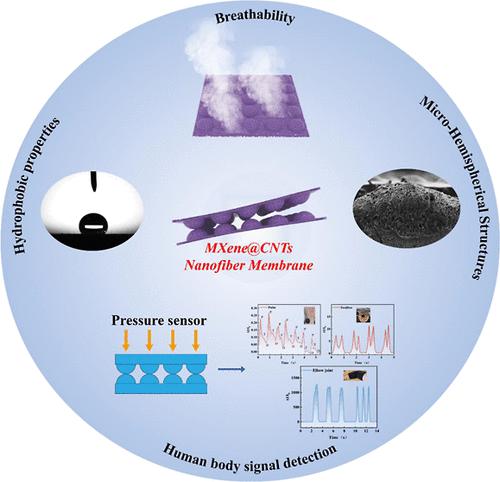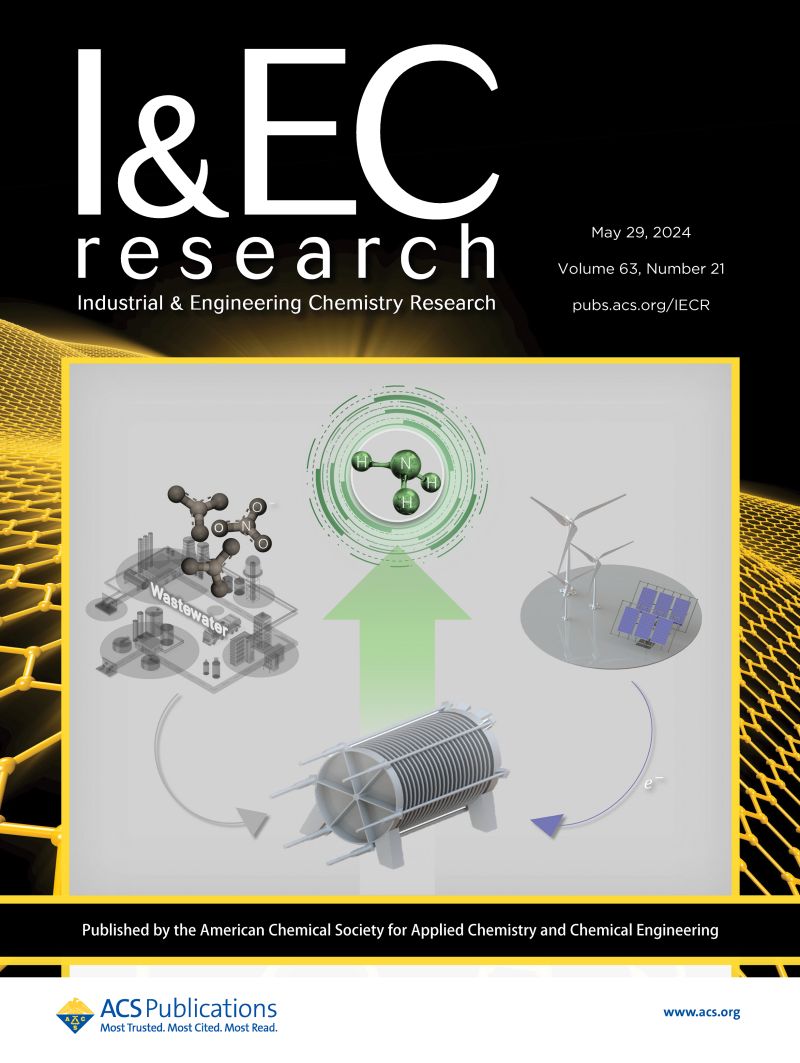Piezoresistive MXene@CNTs Nanofiber Membrane Sensors with Micro-Hemispherical Structures via Template-Assisted Electrospinning for Human Health Monitoring
IF 3.8
3区 工程技术
Q2 ENGINEERING, CHEMICAL
引用次数: 0
Abstract
With the development of the internet of things (IoT) and the rise of the concept of the internet of everything, wearable sensor devices are booming as mobile terminals and have a huge market value. However, the fabrication of nanofiber membrane-based pressure sensors with special microstructures remains a significant challenge. In this study, template-assisted electrospinning was used to fabricate microhemispherical thermoplastic polyurethane (TT) nanofiber membranes. The preparation of MXene@CNTs/TT (MCTT) nanofiber membranes was conducted via the ultrasound-assisted dip-coating method, utilizing MXene and carbon nanotubes (CNTs) as composite conductive materials. Subsequently, polydimethylsiloxane (PDMS) encapsulation was employed to prepare PDMS-MCTT conductive nanofiber membranes. Utilizing an aligned assembly strategy based on the microhemispherical structure, the PDMS-MCTT bilayer pressure sensor exhibits high sensitivity (Smax = 471.3 kPa–1), wide pressure range (0–521.6 kPa), low detection limit (0.003 kPa), fast response time (7 and 8 ms) and reliable cycling performance (3000 cycles). In addition, the sensor offers excellent breathability and hydrophobicity (contact angle of 132.7°). Usefulness of the sensor in detecting body signals highlights its potential for motion detection and health monitoring.

求助全文
约1分钟内获得全文
求助全文
来源期刊

Industrial & Engineering Chemistry Research
工程技术-工程:化工
CiteScore
7.40
自引率
7.10%
发文量
1467
审稿时长
2.8 months
期刊介绍:
ndustrial & Engineering Chemistry, with variations in title and format, has been published since 1909 by the American Chemical Society. Industrial & Engineering Chemistry Research is a weekly publication that reports industrial and academic research in the broad fields of applied chemistry and chemical engineering with special focus on fundamentals, processes, and products.
 求助内容:
求助内容: 应助结果提醒方式:
应助结果提醒方式:


